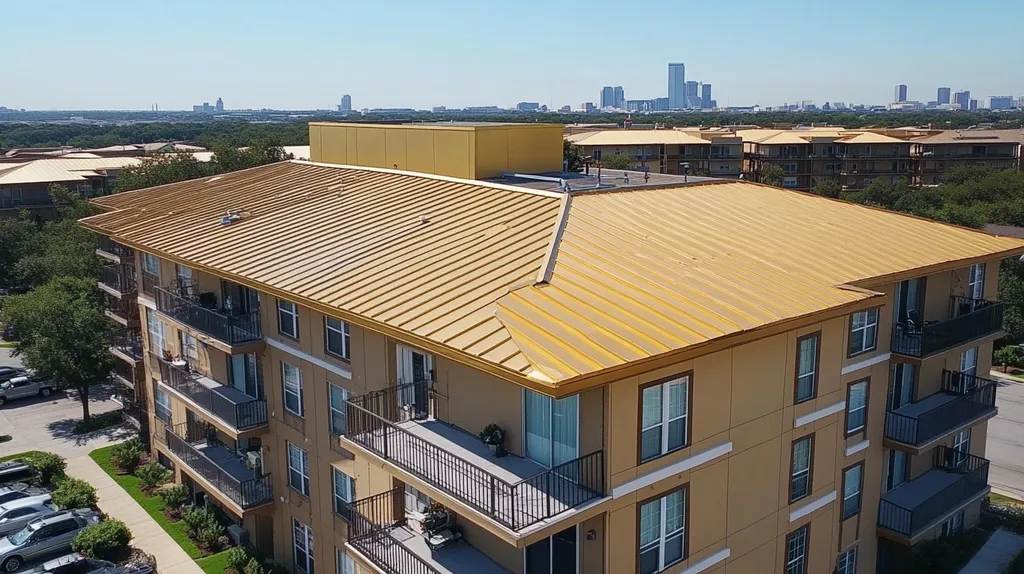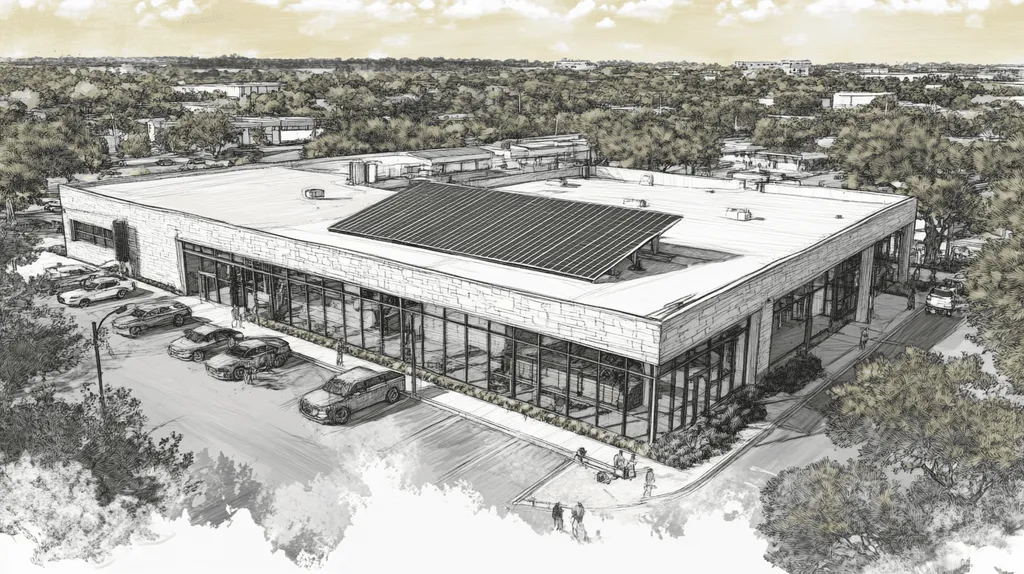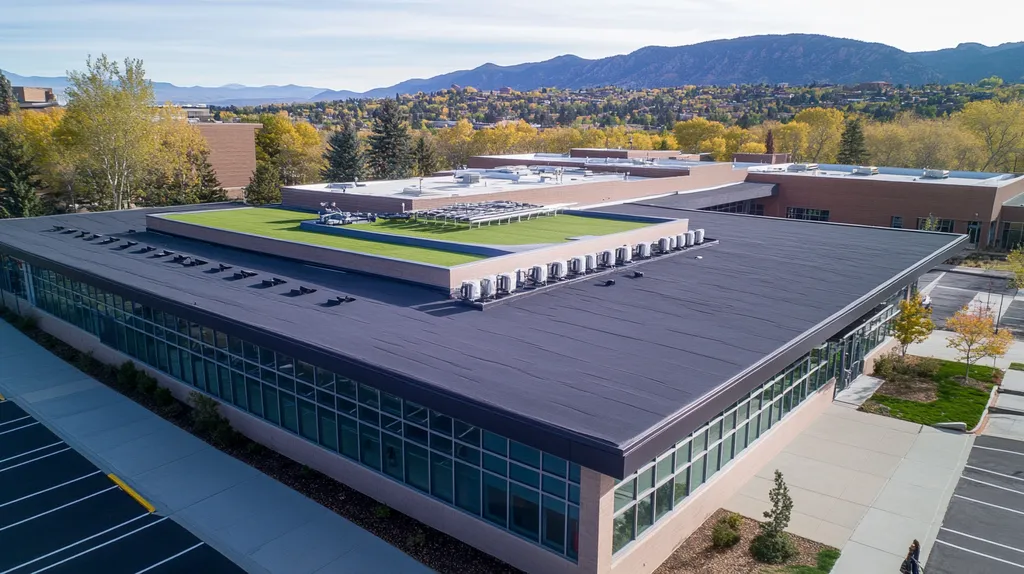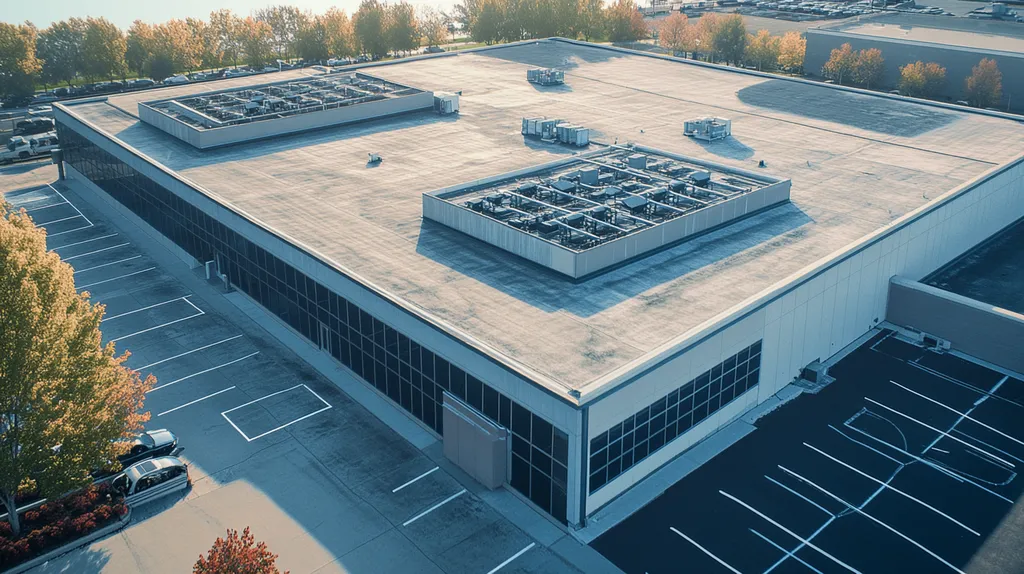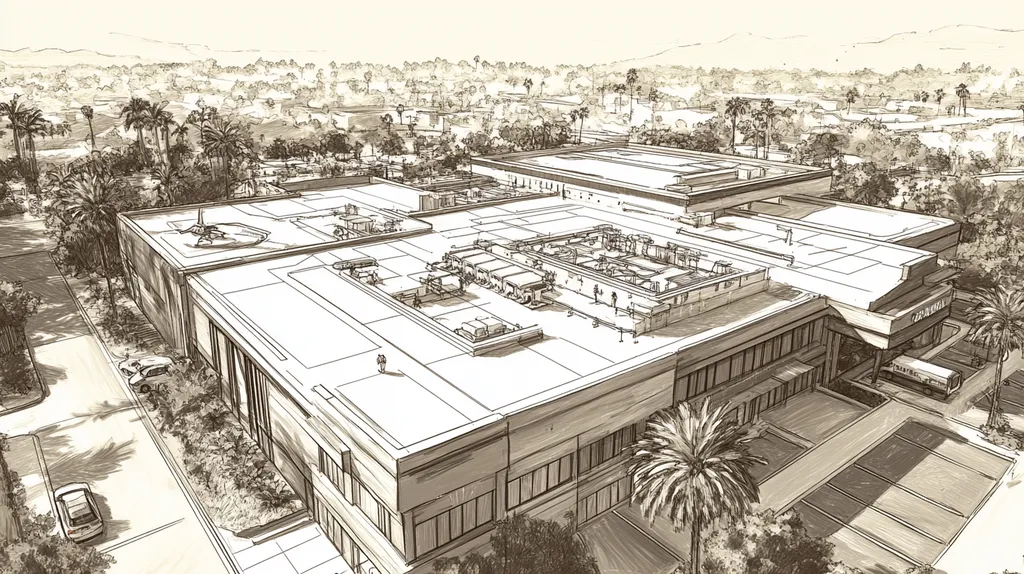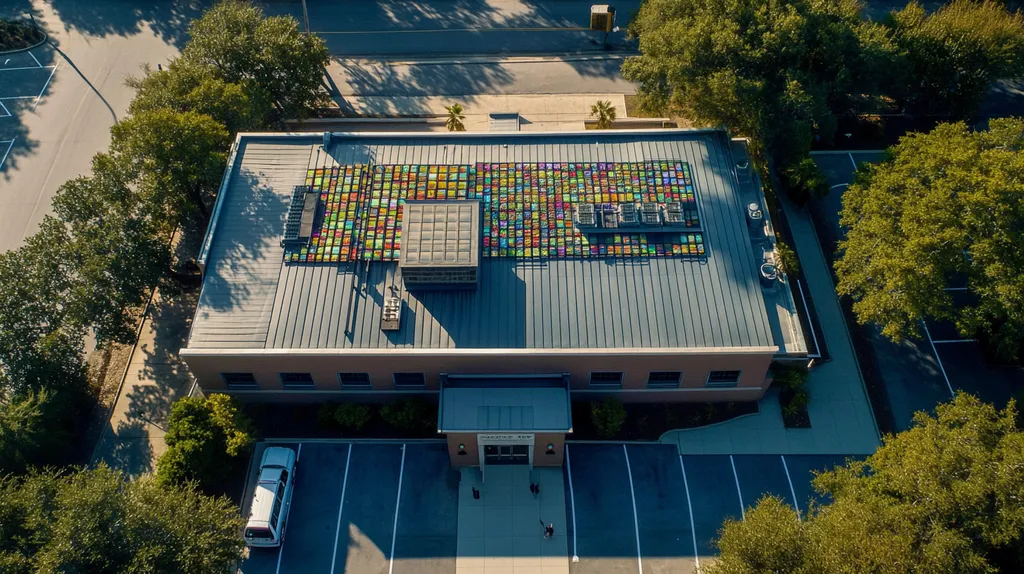Every year, commercial property owners face over $2.1 billion in fines and remediation costs due to non-compliant roofing installations. Understanding permit requirements stands as the critical first line of defense against these costly violations.
From initial application through final inspection, the commercial roofing permit process involves multiple regulatory agencies, extensive documentation requirements, and precise timing of submissions and approvals.
This comprehensive guide breaks down the essential components of commercial roofing permits, providing property owners and facility managers with actionable strategies for navigating complex regulatory requirements while maintaining project timelines and budgets.
SECTION 1: FUNDAMENTAL CONCEPTS
Commercial roofing permits represent a critical gateway between project conception and execution. Statistics show that over 40% of commercial roofing projects face delays due to permit-related issues, while non-compliance can result in fines exceeding $10,000. This section breaks down the essential elements of commercial roofing permits, helping property owners and facility managers understand the regulatory framework that governs their projects.
What is a Commercial Roofing Permit?
A commercial roofing permit serves as the legal authorization to perform roofing work on commercial structures. This document confirms that your planned roofing project meets all local building codes, safety standards, and zoning requirements.
The City of Chicago’s Express Permit Program exemplifies how these permits work, offering streamlined processing for qualifying projects including repair, recover, and full roof replacement work. (source: City of Chicago – Reroofing)
The permit application typically requires detailed documentation, including project scope, materials specifications, and construction methods. For more complex projects, additional engineering documents may be necessary.
Once issued, the permit establishes the parameters within which contractors must work, ensuring consistency with local regulations and industry standards.
Regulatory Agencies and Their Roles
Multiple regulatory bodies oversee commercial roofing permits, each with distinct responsibilities. The local building department typically serves as the primary authority, reviewing plans and issuing permits.
Code enforcement officials conduct periodic inspections throughout the project, ensuring work adheres to approved plans and specifications. These inspections occur at critical stages, from initial tear-off to final completion.
Environmental agencies may become involved when projects impact drainage systems or require hazardous material handling. Their oversight ensures compliance with environmental regulations.
Safety organizations, including OSHA and local fire marshals, establish and enforce workplace safety requirements and fire prevention standards.
Permit Jurisdictions: Who Governs What?
Permit jurisdictions create a complex web of oversight that varies by location. Urban areas typically maintain stricter requirements than rural locations, while historic districts often impose additional restrictions.
State-level regulations establish baseline requirements, but local jurisdictions can implement more stringent standards. These local variations affect everything from material choices to installation methods.
Some properties fall under multiple jurisdictions, requiring coordination between various regulatory bodies. Understanding these overlapping authorities prevents compliance gaps.
Special zones, such as airport vicinity or coastal regions, may impose additional requirements affecting roofing specifications and permit procedures.
SECTION 2: SYSTEM COMPONENTS
The permit application process for commercial roofing requires meticulous attention to documentation and technical details. Studies show that 65% of permit delays stem from incomplete or incorrect documentation submissions. Understanding and properly preparing these components can mean the difference between a project that starts on schedule and one that faces weeks or months of costly delays.
Key Documentation for Permit Applications
The foundation of any successful permit application begins with proper documentation of property ownership, contractor licensing, and insurance coverage. Only qualified parties can initiate the permit process, including licensed contractors, property owners, or their authorized agents. (source: Los Angeles County Building and Safety)
Project scope documentation must detail the extent of work, including whether the project involves repairs, partial replacement, or complete roof system replacement. This documentation should clearly outline the project timeline and installation methodology.
Insurance certificates and warranty documentation protect both property owners and contractors throughout the project lifecycle. These documents must remain current throughout the permit application process.
Local zoning compliance documentation may also be required, particularly in areas with specific height restrictions or aesthetic requirements.
Required Technical Drawings and Specifications
Technical drawings must include detailed roof plans showing dimensions, slopes, drainage patterns, and penetrations. These drawings serve as the blueprint for both permit approval and project execution.
Structural calculations may be necessary when the new roofing system differs significantly in weight from the existing installation. This ensures building integrity and code compliance.
Material specifications must detail all components of the roofing system, from insulation to membrane materials. Energy code compliance documentation is increasingly important in many jurisdictions.
Detailed section drawings showing installation methods at transitions, terminations, and penetrations help reviewers understand complex details.
Essential Supporting Materials and Forms
Environmental impact documentation has become increasingly important, particularly regarding drainage and runoff management. Many jurisdictions require specific forms addressing these concerns.
Safety plans and fall protection documentation demonstrate compliance with OSHA requirements and local safety regulations. These documents outline specific measures for worker and building occupant protection.
Manufacturer certification letters verify that proposed materials and installation methods meet warranty requirements. This documentation helps ensure long-term system performance.
Historical documentation may be required for buildings in designated historic districts or those exceeding certain age thresholds. Special consideration forms often accompany these applications.
SECTION 3: IMPLEMENTATION METHODS
Successfully implementing commercial roofing permits requires careful coordination and attention to detail. Industry data shows that projects with proper permit implementation experience 40% fewer delays and save an average of $25,000 in prevention of rework and fines. Understanding the methodical steps of permit implementation helps property owners and facility managers navigate this complex process while maintaining project timelines and budgets.
Preparing and Submitting Permit Applications
Commercial roofing repairs and re-roofing projects require comprehensive permit applications that demonstrate full compliance with local building codes and safety requirements. (source: Baltimore County Government)
Documentation packages must include detailed project specifications, including material types, installation methods, and safety protocols. These documents form the foundation for regulatory review and project approval.
Professional drawings and calculations require certification from qualified engineers or architects. This ensures structural integrity and code compliance throughout the project lifecycle.
Digital submission platforms have streamlined the application process in many jurisdictions. Understanding these systems and their requirements helps avoid common submission errors.
Coordinating Inspections and Plan Reviews
Successful permit implementation depends on proper scheduling and coordination of mandatory inspections. Each phase of the project requires specific documentation and preparation for review.
Pre-inspection meetings with contractors and building officials help identify potential issues before they become problems. These discussions establish clear expectations and timelines for all parties.
Documentation must remain readily accessible on-site during inspections. This includes approved plans, permits, material specifications, and any relevant correspondence with regulatory authorities.
Failed inspections can result in costly delays and additional fees. Maintaining open communication channels with inspectors helps address concerns promptly and keeps projects moving forward.
Managing Amendments and Revisions
Roofing projects often require permit amendments due to unforeseen conditions or necessary design changes. Establishing clear procedures for managing these changes prevents work stoppages and compliance issues.
Amendment applications must clearly document the scope and reason for proposed changes. Supporting documentation should include updated drawings, calculations, and material specifications as needed.
Review timelines for amendments vary by jurisdiction and complexity. Understanding these timeframes helps project managers adjust schedules and resource allocation accordingly.
Tracking all permit modifications ensures complete documentation for final inspections and project closeout. This documentation proves invaluable for future maintenance and renovation projects.
SECTION 4: MAINTENANCE REQUIREMENTS
Proper maintenance of commercial roofing systems requires careful attention to permit compliance and documentation. Industry data shows that 75% of premature roof failures stem from inadequate maintenance documentation and non-compliant repairs. Understanding permit requirements for ongoing maintenance helps property owners protect their investment while avoiding costly violations that can exceed $25,000 in fines and remediation costs.
Permit Compliance During Ongoing Maintenance
Regular maintenance activities must align with existing permit requirements and local building codes. Even minor repairs can trigger permit obligations, particularly when structural elements or drainage systems are involved.
Commercial reroofing projects in many jurisdictions require specific permits with fees based on the total roofing area. (source: Village of Schaumburg, IL)
Property owners should establish a maintenance schedule that includes regular permit compliance reviews. This proactive approach helps identify potential issues before they escalate into major violations.
Working with certified contractors who understand local regulations ensures maintenance activities remain within permitted parameters. Regular inspections by qualified professionals help maintain compliance throughout the roof’s lifecycle.
Record Keeping for Post-Installation Repairs
Comprehensive documentation of all maintenance activities serves as a critical defense against potential liability issues. Digital tracking systems help organize maintenance records, inspection reports, and permit documentation.
Every repair should be documented with detailed information about materials used, work performed, and any permit-related communications. This documentation becomes invaluable during warranty claims or regulatory inspections.
Maintenance logs should include photographs of completed work, ensuring visual documentation of permit compliance. These records help demonstrate adherence to approved specifications and installation methods.
Creating standardized documentation procedures helps ensure consistency across all maintenance activities. Regular audits of these records help identify patterns and potential compliance gaps.
Updating Permits for Major Roof Modifications
Significant modifications to existing roofing systems often require new or updated permits. Changes affecting structural loads, drainage patterns, or energy efficiency ratings typically trigger permit requirements.
Property owners must submit detailed plans and specifications when seeking modification permits. These submissions should include energy code analysis documentation and updated structural calculations.
Permit updates often require coordination with multiple regulatory bodies, especially when modifications affect fire safety or environmental compliance. Early engagement with authorities helps streamline the approval process.
Maintaining clear communication channels with permitting authorities throughout the modification process helps prevent delays and ensures compliance with current building codes.
SECTION 5: PERFORMANCE METRICS
Performance metrics in commercial roofing directly impact both safety compliance and financial outcomes. Recent industry analyses show that properly tracked metrics reduce liability exposure by up to 65% and improve project completion rates by 40%. Establishing clear measurement protocols helps property owners validate compliance, maintain safety standards, and protect their roofing investments from preventable failures.
Measuring Code Compliance Success
All commercial roofing work requires building permits and adherence to specific performance standards. The City of California City mandates permits for all commercial locations, offering streamlined processing while maintaining strict compliance requirements. (source: City of California City)
Effective compliance measurement requires systematic documentation of material specifications, installation procedures, and ongoing maintenance activities. Digital tracking systems help organize these records while enabling quick access during inspections or audits.
Regular compliance audits should evaluate both physical installation quality and documentation completeness. These reviews help identify potential issues before they escalate into costly violations or safety hazards.
Performance benchmarking against industry standards provides valuable context for compliance success. This data helps facility managers justify investments in preventive maintenance and safety improvements.
Tracking Inspection Pass/Fail Rates
Inspection outcomes serve as critical indicators of roofing system performance and contractor quality. Maintaining detailed records of pass/fail rates helps identify trends and potential areas for improvement in installation practices.
Digital inspection platforms enable real-time tracking and analysis of results. These systems can generate automated alerts when inspection failure rates exceed acceptable thresholds.
Third-party verification adds credibility to inspection results and helps eliminate potential conflicts of interest. Independent assessments often reveal issues that internal inspections might miss.
Historical inspection data supports more accurate project planning and resource allocation. This information proves particularly valuable when scheduling maintenance activities or planning major renovations.
Assessing Structural and Safety Standards
Structural assessments must evaluate both current conditions and potential future risks. Load calculations, drainage patterns, and material degradation rates all factor into comprehensive safety evaluations.
Advanced diagnostic tools like infrared scanning and moisture mapping provide detailed insights into roofing system performance. These technologies help identify hidden issues before they compromise structural integrity.
Safety metrics should incorporate both physical conditions and workplace practices. Regular safety audits ensure compliance with OSHA requirements while protecting workers and building occupants.
Performance data from structural and safety assessments guides long-term maintenance planning. This information helps property owners optimize repair schedules and budget for eventual replacement needs.
SECTION 6: OPTIMIZATION STRATEGIES
Optimizing commercial roofing permit processes can mean the difference between project success and costly delays. Industry data shows that inefficient permit management adds an average of 45 days to project timelines and increases administrative costs by 30%. By implementing strategic optimization approaches, property owners and facility managers can significantly reduce delays, minimize compliance risks, and maintain better control over project budgets.
Streamlining the Permit Application Process
Applications and construction documents for commercial roofing permits in Charleston now utilize digital submission methods, demonstrating the industry’s shift toward streamlined processes. (source: City of Charleston)
Pre-application meetings with permit officials help identify potential roadblocks before submission. These consultations often reveal jurisdiction-specific requirements that might otherwise cause delays.
Creating standardized documentation packages speeds up internal review processes. These packages should include comprehensive checklists for required forms, technical specifications, and supporting materials.
Establishing clear internal workflows ensures consistent quality in permit submissions. Designating a permit coordinator helps maintain accountability and provides a single point of contact for regulatory communications.
Leveraging Digital Tools for Permit Management
Modern permit management platforms offer real-time tracking capabilities and automated notification systems. These tools help property managers monitor application status and respond quickly to information requests.
Cloud-based document storage ensures easy access to critical permit documentation. Digital archives eliminate the risk of lost paperwork while enabling quick distribution to stakeholders.
Mobile applications allow field teams to capture and upload inspection documentation instantly. This immediate documentation helps prevent delays in permit verification and compliance confirmation.
Integration between permit management systems and project scheduling software helps coordinate contractor activities. These connections ensure work begins only after proper authorizations are secured.
Best Practices for Contractor-Local Authority Collaboration
Establishing strong relationships with local building departments creates smoother permit processes. Regular communication helps contractors stay informed about changing requirements and upcoming code updates.
Creating standardized submittal packages tailored to specific jurisdictions reduces review times. These packages should incorporate local preferences for organization and presentation of technical information.
Maintaining detailed records of past permit submissions and outcomes helps optimize future applications. This historical data enables continuous improvement in documentation quality and submission timing.
Implementing feedback loops between contractors and permit officials improves process efficiency. Regular debriefing sessions help identify common issues and develop solutions that benefit all parties.
The Bottom Line
With commercial roofing permit violations costing property owners over $2.1 billion annually, the stakes for proper permit management have never been higher.
Digital transformation is reshaping permit processes, with 73% of jurisdictions now offering online submissions and tracking capabilities that can reduce approval times by up to 60%.
Success requires a comprehensive understanding of permit requirements across multiple regulatory bodies, meticulous documentation practices, and strategic deployment of digital tools for tracking and compliance.
Property owners who implement robust permit management systems consistently achieve 40% faster project completions while reducing compliance risks by over 65%.
The future of commercial roofing permits lies in streamlined digital processes, proactive compliance monitoring, and stronger collaboration between stakeholders at every level.
FREQUENTLY ASKED QUESTIONS
Q. What is a Commercial Roofing Permit?
A. A commercial roofing permit is the legal authorization required to perform roofing work on commercial buildings. This document ensures that your roofing project adheres to local building codes, safety regulations, and zoning laws, helping to avoid fines and delays during the construction process.
Q. What key documentation is needed for a Commercial Roof permit?
A. The permit application requires documentation such as property ownership proof, contractor licenses, and insurance coverage. A detailed project scope outlining the work’s extent, along with technical drawings and material specifications, is also essential for successful submission and approval of the permit.
Q. How do I implement a Commercial Roof permit correctly?
A. Proper implementation involves submitting a comprehensive application that includes detailed project specifications and obtaining necessary inspections. Coordination with building officials and keeping documentation accessible during inspections help avoid costly delays and ensure compliance with regulations throughout the roofing project.
Q. What maintenance steps are necessary for a Commercial Roof?
A. Ongoing maintenance must align with permit requirements and local codes. Even minor repairs may require permits, so it’s vital to keep a maintenance schedule and work with qualified contractors who ensure compliance, thereby extending the roof’s lifespan and preventing costly violations.
Q. How do I measure compliance for my Commercial Roof?
A. Measuring compliance involves maintaining documentation of material specifications and installation methods alongside system performance. Regular audits of both physical and documented aspects ensure that your roof remains compliant with codes and standards, and identifying trends through inspections helps maintain quality control.
Q. What are effective optimization strategies for the Commercial Roof permit process?
A. Streamlining the permit application process through digital submissions and pre-application meetings can significantly reduce delays. Regular communication with local authorities and using standardized documentation packages help improve submission efficiency and ensure compliance with jurisdictional requirements.
Q. What should I know before starting a Commercial Roof project?
A. Before initiating a roofing project, familiarize yourself with local regulations and permit requirements. Conducting a thorough risk assessment based on roof conditions and engaging experienced contractors will help in adhering to safety and quality standards while minimizing potential compliance issues throughout the project.

